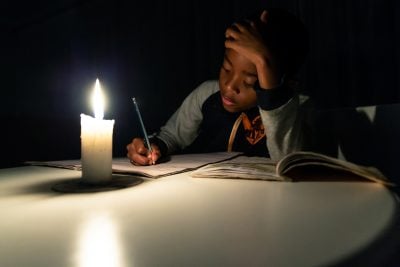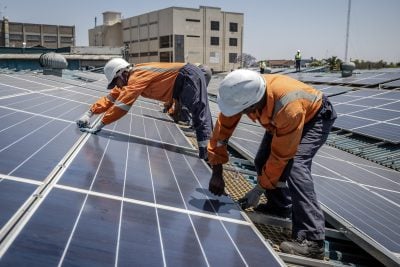The journey by road from Nairobi to Mombasa is a long, 283km drive. In a normal car, it can take approximately 12 hours, averaging around 20km per hour. The route is hot and dusty, following hundreds of cargo trucks along a single carriageway for the most part, with the odd tyre in the middle of the road or zebra crossing to keep drivers entertained.
The train journey isn’t much better, with regular delays on the antiquated line meaning passengers can sometimes arrive at the train station in Nairobi on Friday for a 5pm departure, and not make it to the coast until Sunday lunchtime.
Aware of the impact this out-dated system was having on GDP, the government decided to build a brand new standard gauge railway (SGR) line. Its vision was of a line that would simultaneously transport greater volumes of cargo more quickly, take the pressure off the roads and improve transport for tourists. Building of the new line began in October 2013 and it is scheduled to be complete in December 2017.
“This project is transformative,” says Kenya’s cabinet secretary for transport and infrastructure, James Macharia. “[It will] reduce the number of hours for cargo and passengers from Mombasa to Nairobi. We anticipate that upon completion it will … improve GDP by at least 1.5%.”
Benefits also include job opportunities – approximately 30,000 jobs have been created in building the new line – and upping the amount of cargo that can be transported. As Irungu Nyakera, principal secretary of the Ministry for Transport, says: “[With the new line] we’ll be able to move up to about 22m tonnes of freight on an annual basis. That in itself is removing a significant number of trucks from the road, but at the same time also lowering the costs of transportation by 60%.”
Yet the new railway line has been met with a mixture of criticism, particularly in respect to the huge cost of the build. The SGR is on track to cost approximately $14bn according to latest reports, which is nearly four times the original estimate. It is being funded 90% by the Exim Bank of China, with the Kenyan government covering the remaining 10%.
Many are concerned that this new line does not represent good value for money. Development economist Anzetse Were notes that Kenya is being charged $1.7m more per km than Ethiopia is for its new railway. “As early as 2013, experts raised questions about the costing of Kenya’s SGR … This is particularly a concern because, as experts have pointed out, there are no major rivers or lakes or big hills to justify the high cost of the SGR,” she says (see p. 52 for more on Ethiopia’s railway).
Questions are also being asked about how big an improvement the new line will actually represent. “The SGR freight will have an average speed of 80kph while [Ethiopia’s railway] will go up to 120kph; experts state that it is doubtful those speeds will be reached by the SGR because it is a single track and stoppages will be needed to allow other trains to pass,” says Were.

Cost to wildlife
Beyond the large economic cost of the new line, there are mounting costs to wildlife. According to Paula Kahumbu, chief executive of Kenyan conservation organisation Wildlife Direct, “[The new line] is up on an embankment. It’s completely altered the accessibility from Tsavo East National Park to Tsavo West National Park. Elephants are confused and disorientated … finding themselves on farms, destructing crops and angering farmers.”
Kahumbu says that there is no doubt human-wildlife conflict has risen as a result of the new line. “Elephants are being killed, and that’s a ‘cost’ that is not being talked about very much at all.” The future, she says, looks bleak for these creatures in a country hell-bent on development.
New plans are now in place to drive the SGR through the middle of Nairobi National Park, which has conservationists and locals up in arms. Kenyan Oscar-winning actress Lupita Nyong’o most recently waded into the debate: “We as Kenyans are so fortunate to be the custodians of a large biodiversity that exists in our national parks … Urge [the government] to construct around the park, not through it!”
Yet despite their best efforts, concrete pillars are already being constructed in the park for the SGR, which can be seen from miles around. Kenya Wildlife Service Director General Kitili Mbathi said of the move, “We were between a rock and a hard place – either give up 50 hectares and increase the cost by 50%, or have the least obtrusive bridge across the park.”
Also under fire is the cost to individuals, whose homes have been bulldozed for the new line, sometimes without adequate compensation, and whose livelihoods have been disrupted. In Mombasa, for example, the dredging and building for the new station has cost fishermen their jobs.
Mohammed Said, a fisherman at the Kenyan coast says that the new line has “covered the portion of the ocean that we were using. Previously, we used to do our fishing very well but since the project started it has affected us. We have not been compensated, but they keep on encouraging us that they will.”
And there’s the cost to the environment. Ruth Birgen, Legal Researcher at Natural Justice, a legal firm focusing on environmental law and human rights, talked of the impact the sand harvesting for the line has had on the country and the locals living in the affected areas. “There are massive challenges at the moment. The new line requires a huge amount of sand for the build. This has to be taken from rivers or the sea. Across the country, rivers have been devastated, farms have been affected by the lack of water, livelihoods at the coast are being lost and communities are being pitted against one another.”
With all these mounting costs, some have quipped that the SGR is just as much a “lunatic line” as the old one. The current railway was nicknamed the Lunatic Express due to the gigantic cost of the build, and because man-eating lions killed a number of the construction workers along the way.
Yet the government and Kenya Railways Association (KRA) are certain the line will have a positive impact on the country, despite all the challenges and criticism faced. One KRA representative said, “We are serving the people of Kenya and East Africa. This is not the lunatic express; this is the sanity express.”
Harriet Constable
Want to continue reading? Subscribe today.
You've read all your free articles for this month! Subscribe now to enjoy full access to our content.
Digital Monthly
£8.00 / month
Receive full unlimited access to our articles, opinions, podcasts and more.
Digital Yearly
£70.00 / year
Our best value offer - save £26 and gain access to all of our digital content for an entire year!
 Sign in with Google
Sign in with Google 


